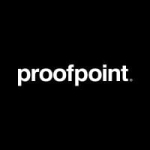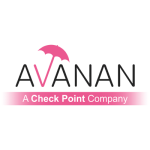What is our primary use case?
I work at S21sec, which is a partner of Cisco in Portugal. We do integration of different Cisco solutions for our customers. Nowadays, we mostly do integration of Cisco cloud solutions for customers.
Cisco Secure Email is the solution that we deploy for customers in Portugal mostly as a backup of an existing solution such as Office 365 because it guarantees that the customer never falls out of options if the main product has some problem. If they rely on having an email solution that cannot fail, that's an excellent option for them to have in place. It's the oldest solution that we deploy for customers in Portugal. It has a very nice history and very good quality. It's perceived by our customers as an email solution that functions all the time.
How has it helped my organization?
One benefit is the resilience of the solution when implemented in conjunction with other solutions, and the other one is the new features that Cisco is adding to the solution itself, such as awareness of advanced phishing threats. The environment that Cisco is building around this primary product in its catalog is helpful.
We offer almost all of the Cisco Security solutions, but recently, we've been working more with cloud solutions. It's easier for customers to adopt them. We also continue to deploy some of the firewall solutions with the physical devices and also email protection solutions either with the VM solutions or with the physical appliances. We've been seeing evermore integration of the products based on the browsing console, which is very nice for customers because they only need to have a browser to access all the different consoles of different products. They can be consolidated with SecureX. It's an advantage for the customer to be able to handle all the different consoles for different integrations that the customer has in one place.
Cisco Talos is a very nice complementary solution to the email protection suite. It gives you the threat intel regarding the latest news and infections that can be problematic for the customers. They become aware of what's happening and any latest vulnerabilities they may have on-prem.
What is most valuable?
The advanced phishing protection and the integration with the awareness tool that Cisco has embedded into the solution to bring awareness to the customers about the dangers of phishing attacks and other things that come from email are the most valuable features.
What needs improvement?
Cisco has already improved this solution with some add-ons to the basic product. Cisco is already providing a very good environment with the IronPort solution, but there could be some more integration with other products. For instance, an integration with the EDR solution could be there to raise an alert.
For how long have I used the solution?
We've been a partner of Cisco for more than 10 years, and we've mostly done integration of solutions.
How are customer service and support?
We usually give the first line of support to the customer, and then only, we go to the Cisco support. We have a very strong Cisco security team in Portugal, so whenever we need any support, we use those resources. I don't remember a time when I had to open a ticket because the local team has been very good.
How would you rate customer service and support?
Which solution did I use previously and why did I switch?
Cisco Secure Email hasn't helped clients consolidate any applications. In Portugal, there's no business for that because what you usually do is implement several solutions that are regarded as the better solutions in terms of the market. In some cases, it could be Cisco, and in other cases, it could be another player. At S21sec, we try to give a better solution to customers and adapt and customize it to the specific needs of our customers.
The main difference between Cisco Secure Email and other solutions is the reliability and the capability to offline the email if there are some problems on the customer side. We can also overcome problems that may arise in terms of the local telecommunication operators that handle the communication. If there's a failure there, we can overcome those problems with the relays from the Cisco solution.
How was the initial setup?
The deployment model varies a little bit. In Portugal, some sectors still rely on on-prem solutions, but we are trying to build awareness that the new solutions relying on the cloud are better for the customers because they don't have to worry about getting new patches and new security updates and patching the infrastructure. They only need to rely on having a service that is provided by Cisco for having the best security. They don't have to worry about the maintenance of the platform itself. The cloud provider that our clients use varies. We work a lot with the banks and financial organizations in Portugal. They are historical customers that don't want to go for public cloud solutions. They still rely on on-prem solutions. They have evolved to having virtualized solutions instead of appliance solutions, but they still rely on having mostly private cloud solutions. They use local providers. We are seeing a shift to global providers but not with all of them.
It's a very modular solution. We have some customers who have deployments all over the world. We clusterize the solutions in each of those locations, and then they connect them with the global management solution. We can manage all the operations of the different clusters spread around the world from one site. It's a very good solution in terms of redundancy even in different geographies.
It's a very easy solution. You can go for a very customizable environment, but usually, for the day-to-day needs of most customers, it's very easy to deploy. You can just customize the options to make it more secure for a customer's environment.
What's my experience with pricing, setup cost, and licensing?
It's adapted to the market. It's similar to other vendors. We at least don't have many problems regarding that because Cisco is adaptable on that side. When we present the solutions to the customers, we tend to achieve the goals that the customer has in terms of the budget for such implementations.
We offer the best solution for what customers intend to do and the type of problems that their business may have. When a solution is adaptable and customizable to the customer environment, customers tend to go ahead with it. Even if it requires more investment, we find a way of getting it to the budget and getting a good return on investment.
What other advice do I have?
To those evaluating this solution, I'd recommend trying the product. Cloud solutions are very easy to use, and you can do a PoC. In a matter of hours or a day, you can deploy the solution and use it fully.
We are Cisco partners. Cisco has a very nice solution and a very good security team in Portugal, but obviously, they can't cater to all the customers. An integrator does that part. With the relationship that we have with the customers, we can apply and customize the solutions that Cisco has in its portfolio according to the environment and specific needs of each customer.
Our partnership with Cisco is pretty close to a 10 out of 10 because we are getting different kinds of solutions. We at S21sec handle just security. We don't do storage, and we don't do servers. We are very focused on security, and the partnership that we have with Cisco is ever-growing because nowadays, for instance, OT solutions are also a very huge concern for us, and what we have seen with Cisco solutions that are being brought to the market is that they also started to handle the new security issues that we find in other sectors. They are not only into IT. They are also going into the OT and the IoT world. They are able to customize and bring new solutions, even some developed insights, by buying other companies and adapting them to the Cisco reality. They are able to devise a product that handles the needs of different kinds of customers in different areas of the business, not just the IT world but also the industrial world.
I would rate Cisco Secure Email a nine out of ten. It's growing up to be much more than just an email protection tool. It's going for the awareness of the customers, and that's a good complementary solution that addresses other problems that come from using email nowadays.
Disclosure: My company has a business relationship with this vendor other than being a customer. Reseller






















